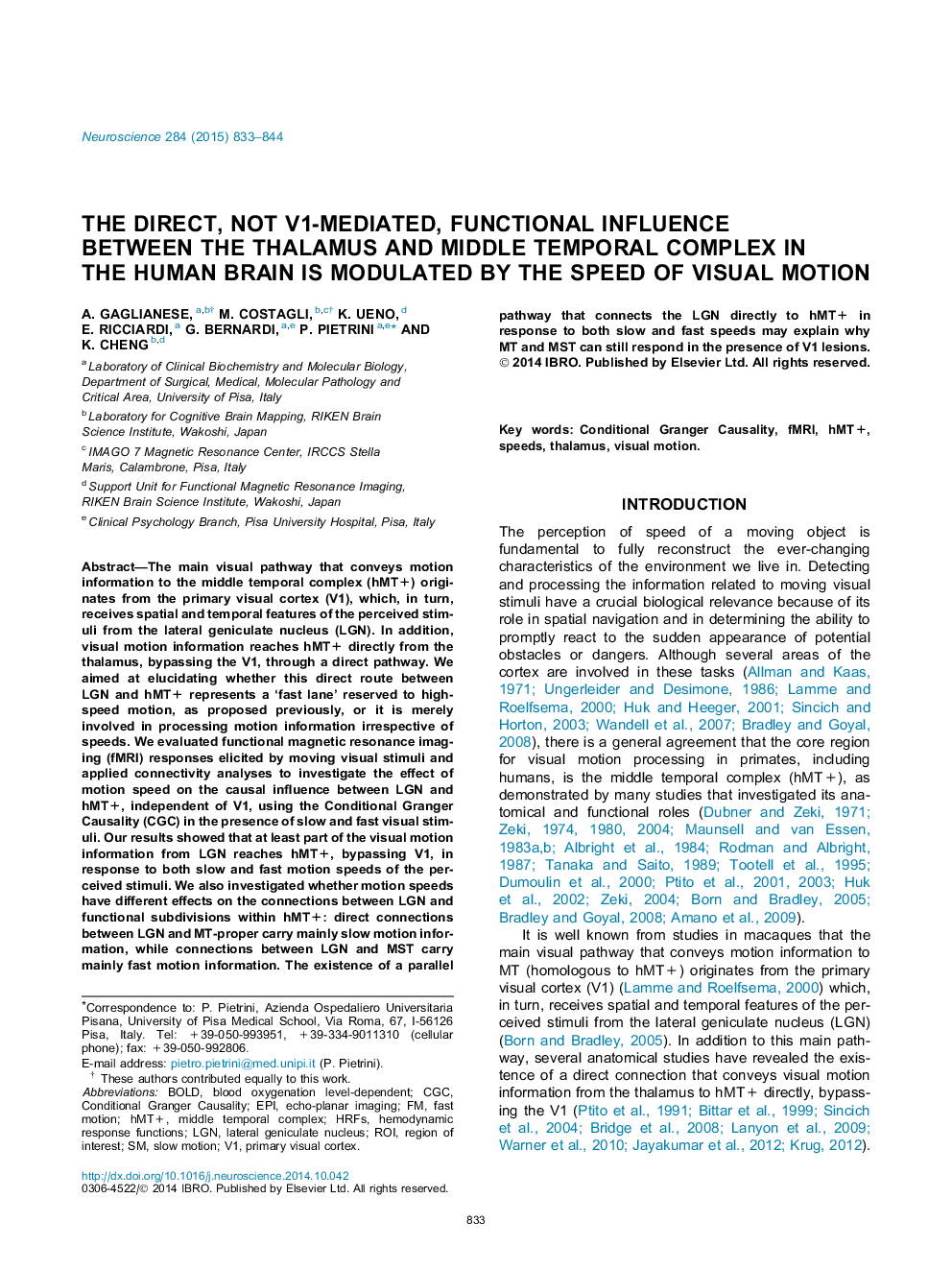| کد مقاله | کد نشریه | سال انتشار | مقاله انگلیسی | نسخه تمام متن |
|---|---|---|---|---|
| 6273040 | 1614792 | 2015 | 12 صفحه PDF | دانلود رایگان |
عنوان انگلیسی مقاله ISI
The direct, not V1-mediated, functional influence between the thalamus and middle temporal complex in the human brain is modulated by the speed of visual motion
دانلود مقاله + سفارش ترجمه
دانلود مقاله ISI انگلیسی
رایگان برای ایرانیان
کلمات کلیدی
BOLDEPIROILGNhMT+CGC - GTCblood oxygenation level-dependent - اکسیژن خون وابسته به سطحThalamus - تالاموسEcho-planar imaging - تصویربرداری اکو فلاریfMRI - تصویرسازی تشدید مغناطیسی کارکردیSlow motion - حرکت اهستهVisual motion - حرکت بصریSpeeds - سرعتConditional Granger causality - علیت گرنجر مشروطprimary visual cortex - قشر بصری اولیهregion of interest - منطقه مورد نظرlateral geniculate nucleus - هسته ژنیکول جانبی جانبی
موضوعات مرتبط
علوم زیستی و بیوفناوری
علم عصب شناسی
علوم اعصاب (عمومی)
پیش نمایش صفحه اول مقاله

چکیده انگلیسی
The main visual pathway that conveys motion information to the middle temporal complex (hMT+) originates from the primary visual cortex (V1), which, in turn, receives spatial and temporal features of the perceived stimuli from the lateral geniculate nucleus (LGN). In addition, visual motion information reaches hMT+ directly from the thalamus, bypassing the V1, through a direct pathway. We aimed at elucidating whether this direct route between LGN and hMT+ represents a 'fast lane' reserved to high-speed motion, as proposed previously, or it is merely involved in processing motion information irrespective of speeds. We evaluated functional magnetic resonance imaging (fMRI) responses elicited by moving visual stimuli and applied connectivity analyses to investigate the effect of motion speed on the causal influence between LGN and hMT+, independent of V1, using the Conditional Granger Causality (CGC) in the presence of slow and fast visual stimuli. Our results showed that at least part of the visual motion information from LGN reaches hMT+, bypassing V1, in response to both slow and fast motion speeds of the perceived stimuli. We also investigated whether motion speeds have different effects on the connections between LGN and functional subdivisions within hMT+: direct connections between LGN and MT-proper carry mainly slow motion information, while connections between LGN and MST carry mainly fast motion information. The existence of a parallel pathway that connects the LGN directly to hMT+ in response to both slow and fast speeds may explain why MT and MST can still respond in the presence of V1 lesions.
ناشر
Database: Elsevier - ScienceDirect (ساینس دایرکت)
Journal: Neuroscience - Volume 284, 22 January 2015, Pages 833-844
Journal: Neuroscience - Volume 284, 22 January 2015, Pages 833-844
نویسندگان
A. Gaglianese, M. Costagli, K. Ueno, E. Ricciardi, G. Bernardi, P. Pietrini, K. Cheng,